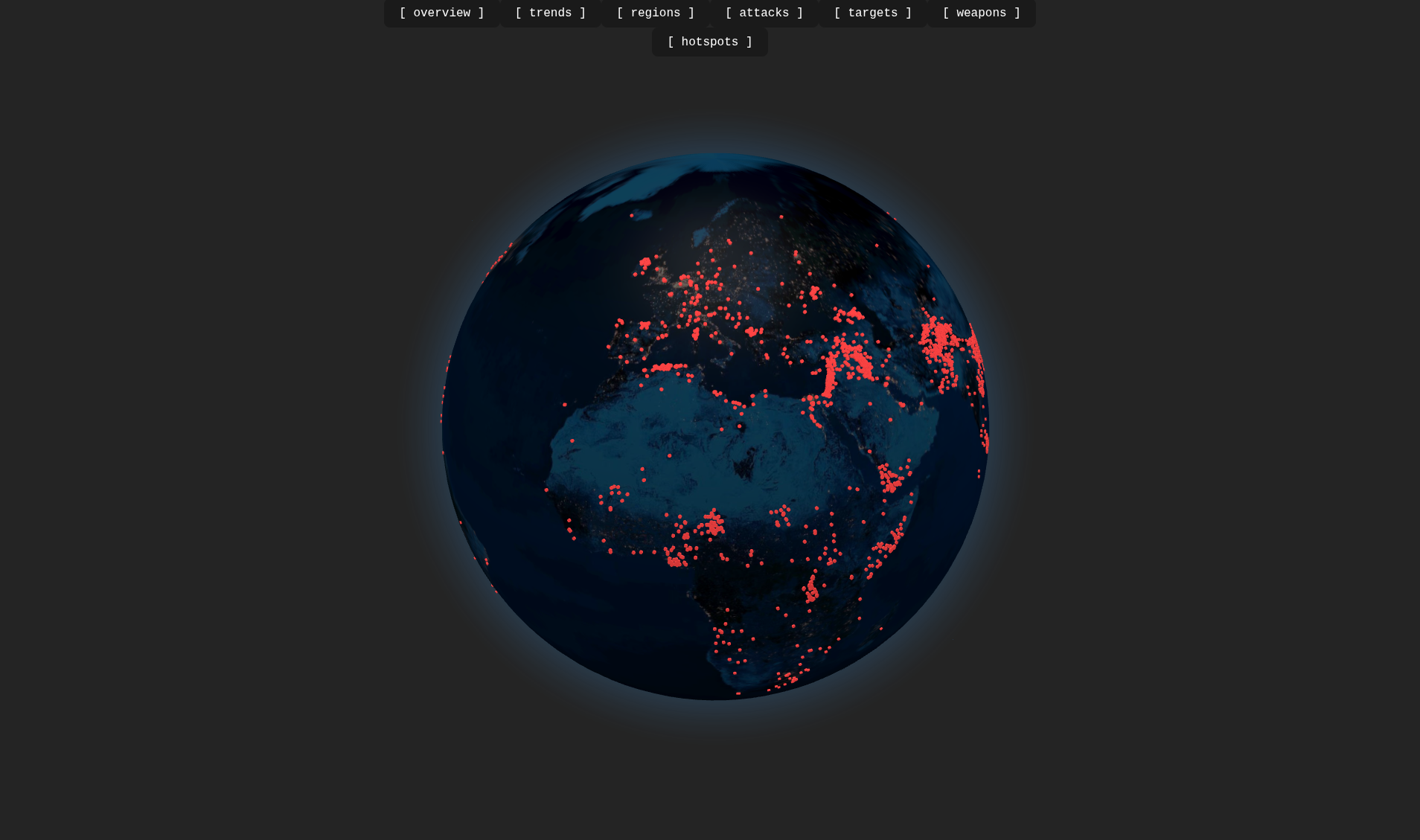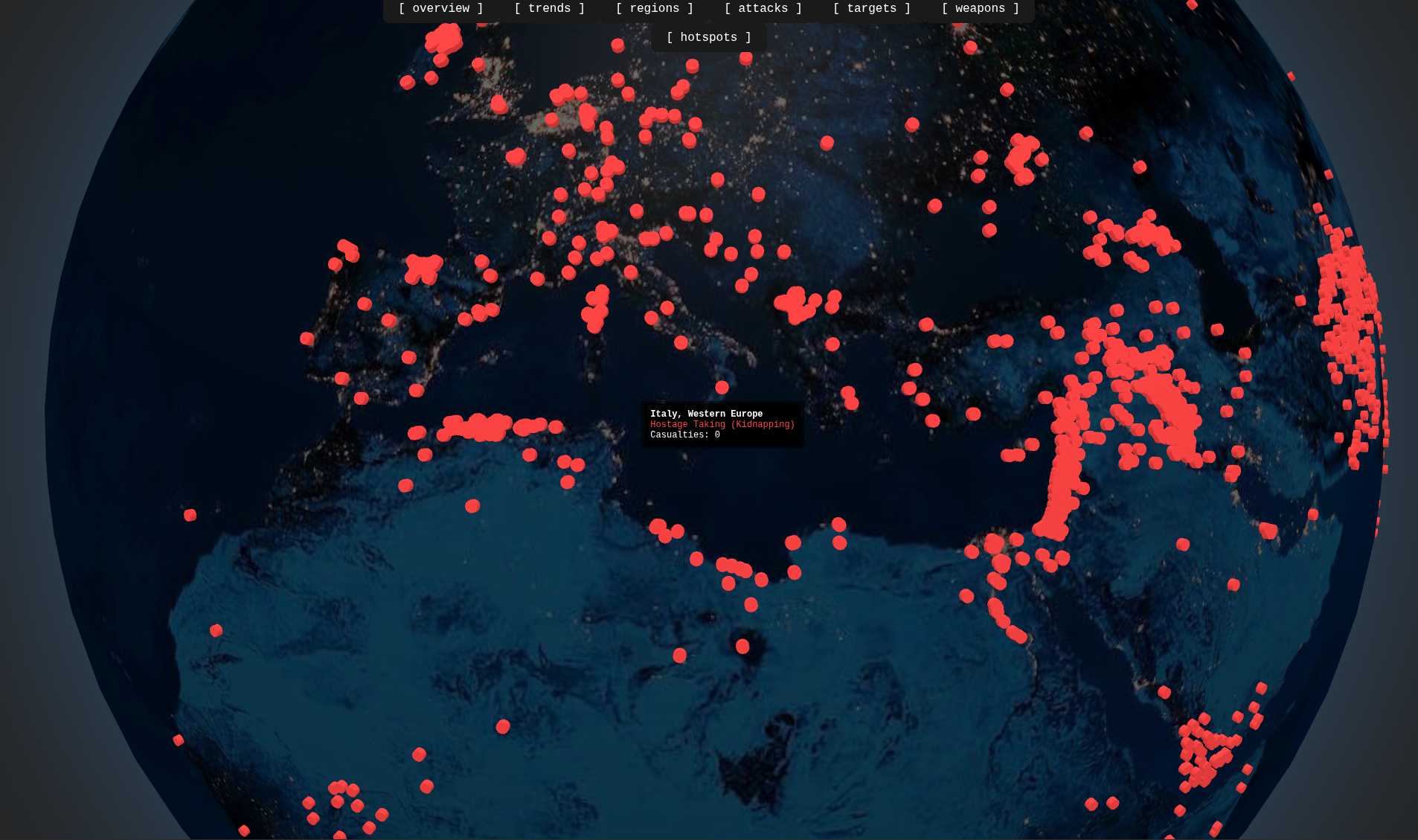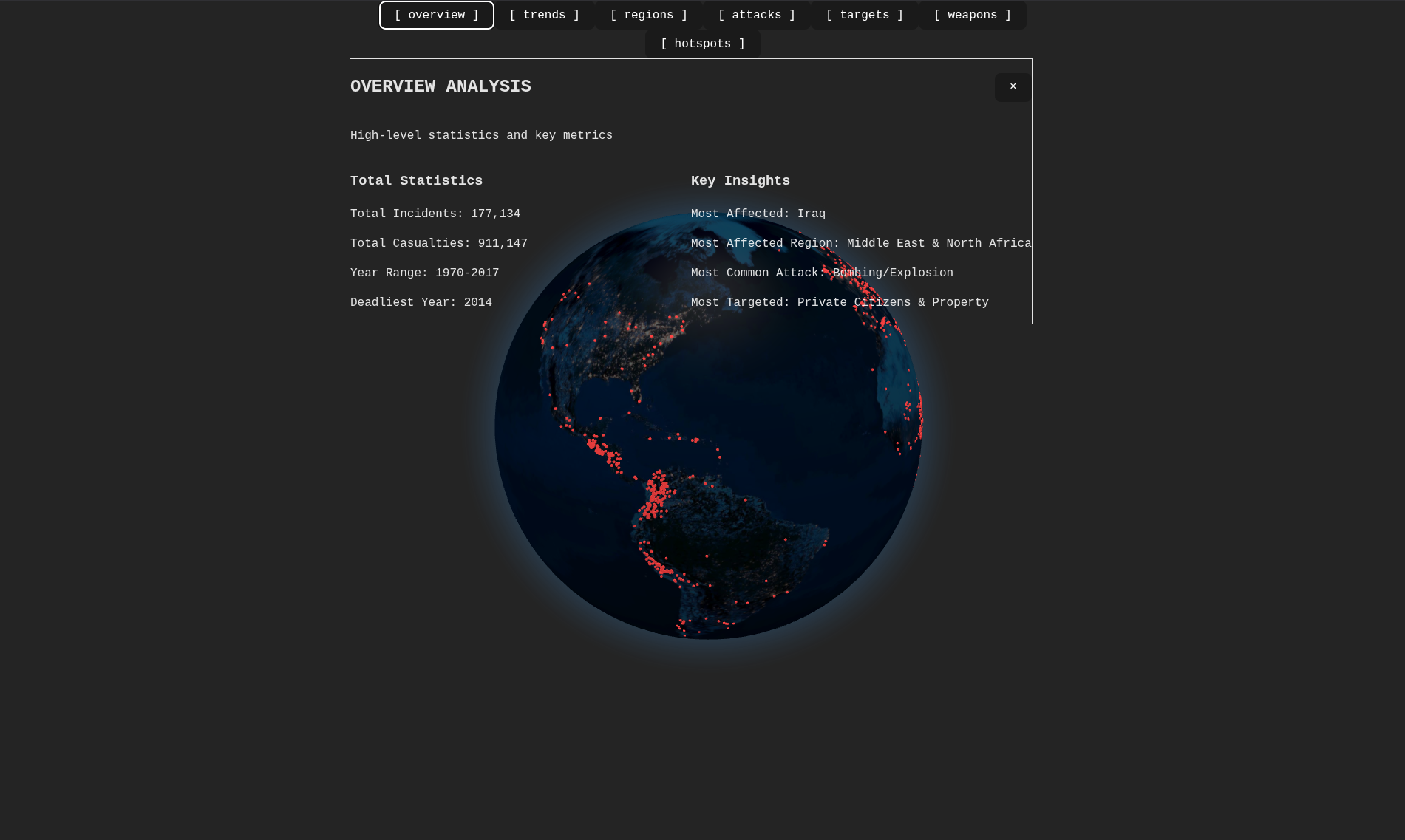03 : Projects
Fun little side gigs.
Global Terrorism Analysis
A comprehensive data analysis project that explores terrorism patterns from the Global Terrorism Database (GTD) spanning from 1970 to 2017. This project examines the relationship between education levels, GDP per capita, and terrorist activities to predict future extremist hotspots and understand the root causes of violent extremism.
Key Features:
- Interactive heatmaps visualizing terrorism incidents across regions and time periods
- Statistical analysis using T-tests and linear regression to identify correlations
- Predictive modeling to identify countries most susceptible to future terrorism
- Comprehensive data visualization including regional terrorism patterns
- Analysis of 200,000+ terrorist attacks from the Global War on Terror era
- Integration of multiple datasets including education and GDP data
Key Findings:
- Identified significant correlation between education levels and terrorist activity
- Sub-Saharan Africa predicted as most susceptible region for future incidents
- Iraq, Afghanistan, and Pakistan showed highest incident numbers during GWOT period
- 2014 marked peak terrorism activity coinciding with ISIS expansion
- Statistical validation through bootstrap methods and cross-validation
Technologies Used:
Python • Pandas • NumPy • Seaborn • Scikit-learn • Jupyter Notebook • Statistical Analysis
Project Screenshots:



Teen Phone Addiction Prediction Dashboard
A comprehensive machine learning project that predicts teen phone addiction levels based on lifestyle and behavioral survey data. This full-stack application combines data science, web development, and machine learning to provide insights into digital wellness patterns among teenagers.
Key Features:
- Interactive Streamlit dashboard for data exploration and visualization
- FastAPI backend server for real-time predictions
- Machine Learning model using RandomForestRegressor with comprehensive metrics
- MLFlow experiment tracking for model versioning
- Docker-ready deployment architecture
- Prediction playground with feature importance analysis
Technologies Used:
Python • Streamlit • FastAPI • Scikit-learn • MLFlow • Pandas • Docker • Uvicorn
Live Application Preview:
Note: For the complete experience with full functionality, click "Launch Live Demo" above. Source code and documentation available on GitHub.